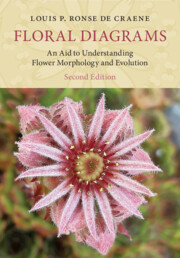Book contents
- Floral Diagrams
- Floral Diagrams
- Copyright page
- Dedication
- Contents
- Preface
- Acknowledgements
- Part I Introduction to Floral Diagrams
- 1 Introduction to Flower Morphology
- 2 The Significance of Floral Diagrams
- 3 Floral Diagrams Used in This Book
- Part II Floral Diagrams in the Major Clades of Flowering Plants
- Part III Conclusions
- Glossary
- References
- Index
1 - Introduction to Flower Morphology
from Part I - Introduction to Floral Diagrams
Published online by Cambridge University Press: 11 March 2022
- Floral Diagrams
- Floral Diagrams
- Copyright page
- Dedication
- Contents
- Preface
- Acknowledgements
- Part I Introduction to Floral Diagrams
- 1 Introduction to Flower Morphology
- 2 The Significance of Floral Diagrams
- 3 Floral Diagrams Used in This Book
- Part II Floral Diagrams in the Major Clades of Flowering Plants
- Part III Conclusions
- Glossary
- References
- Index
Summary
This chapter deals with the wider context of morphological botany, to which floral diagrams are intimately connected. A definition of flowers is presented , followed by a presentation of the different floral organs and their evolution. The perianth and its homology is explained, reflecting different evolutionary trends. The floral complexity is shown through trends in the androecium and gynoecium. Different factors contributing to the diversity and evoluton of flowers are discussed, such as nectaries and hypanthia and changes in symmetry. The importance of phyllotaxis in the development of flowers is demonstrated and the difference and transitions between spirals and whorls is highlighted. Meristic changes and various fusions of the floral parts are clarified.
Keywords
- Type
- Chapter
- Information
- Floral DiagramsAn Aid to Understanding Flower Morphology and Evolution, pp. 3 - 43Publisher: Cambridge University PressPrint publication year: 2022

